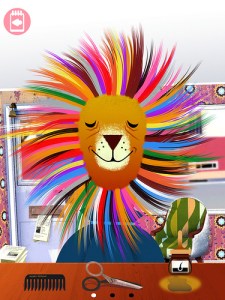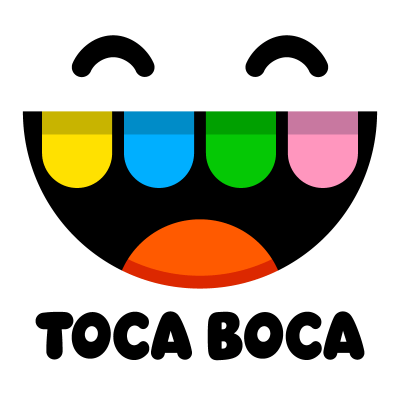If you’ve never heard of Toca Boca, then you must not have kids. The studio behind a series of popular children’s applications for iOS (iPhone and iPad) has just passed 22 million downloads across its portfolio of now 16 applications, and is today expanding to Android, starting with support for the Kindle Fire. More Android releases are planned for early next year, the company says.
Toca Boca, for those unfamiliar, operates like a startup within the family-owned, 200-year-old Swedish publishing company Bonnier. Founded in September 2010, Toca Boca CEO Björn Jeffery describes the company’s structure as “a startup with a very friendly bank”: It’s independently run, but doesn’t have to worry about fundraising. That’s a different sort than many in the space. Often, kids app makers are either independent studios or are backed by VC funding.
Bonnier, says Jeffery, saw the potential for the iPad early on. “It was another take on media, instead of repurposing old IP and old materials,” he explains. “A lot of media companies just take what they have and put them on a new screen, and say ‘right, we’re finished.'” Toca Boca, however, grew out of earlier research in Bonnier’s R&D division, where the company had developed concepts for how its media content could work on a digital, touchscreen computer. This research, in fact, was performed before the iPad was even released.
After the iPad’s launch, Jeffery says they realized some of their earlier ideas were right, and others were a bit off. But what stuck out the most was the way the iPad was being brought into family homes and shared. “We thought it would be very interesting to see how we could make a shared experience on the touchscreen for children,” says Jeffery. “The touchscreen itself gives kids the possibility to have their first interactive media experience.”
 Toca Boca’s debut app, launched in March 2011, was Toca Tea Party, which mixed digital and real-life play. (The iPad served as the host for a virtual tea party.) Subsequent releases have evolved that original concept of interactivity, but generally now have the child interacting with the characters in the app instead. The most popular series within Toca Boca’s portfolio, Toca Hair Salon, allows kids to wash, cut, color and style various characters’ hair, for example. So far, this series alone has produced over 10 million of the 22 million total Toca Boca app downloads. These are digital “toys,” says Jeffery, not digital games. The company had just 5 million downloads this time last year.
Toca Boca’s debut app, launched in March 2011, was Toca Tea Party, which mixed digital and real-life play. (The iPad served as the host for a virtual tea party.) Subsequent releases have evolved that original concept of interactivity, but generally now have the child interacting with the characters in the app instead. The most popular series within Toca Boca’s portfolio, Toca Hair Salon, allows kids to wash, cut, color and style various characters’ hair, for example. So far, this series alone has produced over 10 million of the 22 million total Toca Boca app downloads. These are digital “toys,” says Jeffery, not digital games. The company had just 5 million downloads this time last year.
Today, the company is trying to spin off that success with the release of a sequel, Hair Salon 2. Although it’s early, the potential is there for another hit. The app is now No. 1 on iPad in 18 markets, and top 10 in 55 markets. That’s in paid apps overall, mind you, not kids apps. In the U.S., Toca Boca’s largest market, it’s currently sitting in the No. 3 spot. Toca Boca’s apps are available in 146 countries worldwide and range in price from 99 cents to $2.99. A few are free. The company previously announced it was profitable, but it doesn’t discuss revenues.
As for what’s next, the plan is to continue careful expansion into the Android market in 2013. Jeffery says that they have to research what that market looks like for them. Because of the fragmentation, they want to make sure they’re supporting the majority of their target market, but need to make sure the experience is sufficiently good on all the hardware. That’s one reason Toca Boca started by launching on Hair Salon 2 on the Kindle Fire. The other is that the Fire tends to have a “family-friendly ecosystem.”
Expansion Through Acquisition
In addition, thanks to the success of Toca Boca, Bonnier itself is now looking to grow its own portfolio of kids app companies through acquisitions. To that end, Toca Boca this year established offices in San Francisco, putting it closer to the kids app startups that might see joining Bonnier as a better way to grow their own businesses.
“Sweden is a nice place,” laughs Jeffery. “But it’s not the sort of place that people happen to be in. San Fransisco is more of a hub for these sorts of things.” He thinks that next year, the kids app market will be undergoing changes that will greatly impact startups building in the kids app space, which will make joining Bonnier a better fit for some smaller startups – especially those who want to grow a long-term business, not build a company to sell it in two or three years’ time.
“The amount of money going in [the kids app market] is going to create a different market dynamic, and that is going to require a lot of smaller developers to think twice,” says Jeffery. “You have to have a sufficient amount of budget to even compete. That could be a hard time for a lot of smaller developers. It’s going to be an interesting 2013.”
Acquisition and partnership talks are now under way with a handful of kids app companies, Jeffery says. He expects no more than three acquisitions to be completed in the year ahead.
